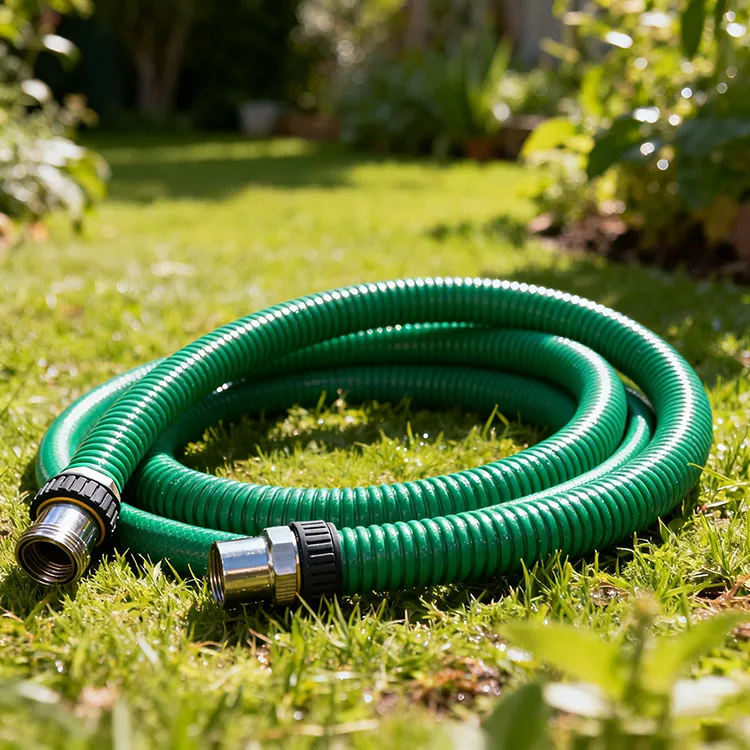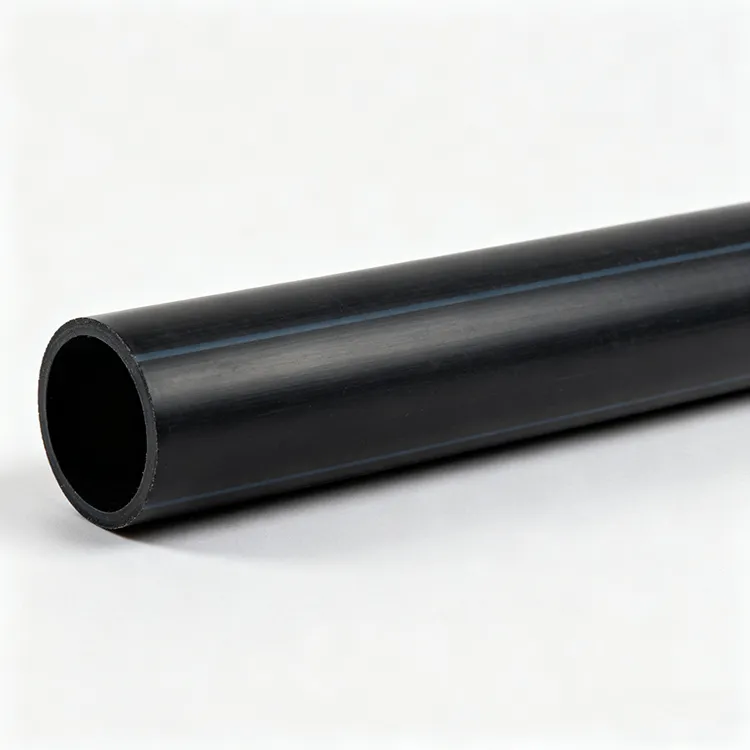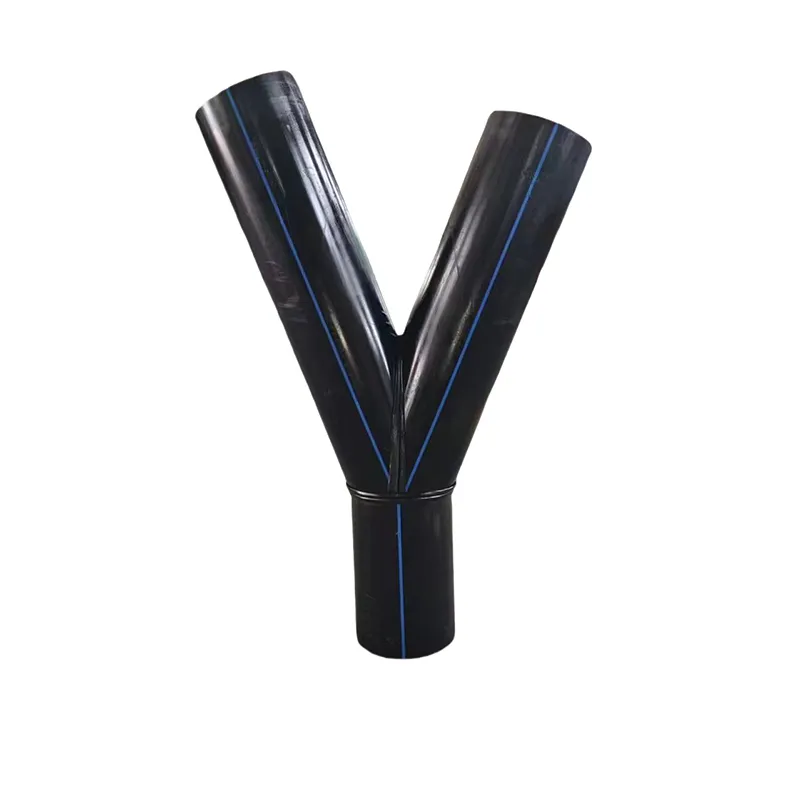What kind of pipe is PE-RT pipe?
PE-RT is the abbreviation of Polyethylene Raised Temperature. It is copolymerized by ethylene monomer and 1-octene monomer. It is a medium density ethylene-octene copolymer specially designed for underfloor heating systems. It has a narrow molecular weight distribution. , The special molecular structure of octene evenly distributed on the main chain of the polymer, it not only retains the original hygienic performance and processing performance of PE, but also strengthens the high temperature durability of a new type of special pipe material. High temperature resistance and frost resistance are the characteristics of PE-RT pipes and fittings. The pipes and fittings produced with this raw material are mainly used in the field of hot water/ heating pipes in buildings, and their durability is the same as that of buildings, with a minimum of 50 years. At the same time, they also have good recyclability and high added value.
PE-RT is a high temperature resistant floor heating special pipe, the main raw material is polyethylene. It can be used as non-crosslinking of hot water, so it is also called "high temperature resistant non-crosslinked polyethylene pipe". PE-RT pipe has very good flexibility and good impact resistance. The color of PE-RT pipe is the original color of the raw material, that is, transparent color, without any color masterbatch and filler. It has the characteristics of non-toxic and tasteless, and is very environmentally friendly.
PE-RT tube development history
PE-RT raw material not only has a qualified creep rupture curve, but also the price of the pipe is moderate, the construction is convenient and fast compared with other varieties, and the connection form is the most reliable standard mutual fusion hot-melt connection at this stage. The diameter of the pipe is larger than the inner diameter of the pipe of the same specification is relatively small in the system because there is no mechanical connection for partial diameter reduction in the system.
With the development of plastic technology, underfloor heating systems can provide plastic pipes for various purposes. Because the plastic pipe has the advantages of smooth inner wall, small flow resistance of heat medium, acid and alkali resistance, long service life and convenient installation. In recent years, it has been widely used in the underfloor heating system. As a new generation of special heating pipes, PE-RT is gradually becoming the mainstream product in the underfloor heating market.
Characteristics of PE-RT pipe
1. Softness: Because PE-RT is relatively soft. Therefore, no special tools are required during construction, so the construction cost is relatively low.
2. Thermal conductivity: The pipes used for underfloor heating need to have good thermal conductivity. PE-RT has better thermal conductivity, and its thermal conductivity is twice that of PP-R and PP-B pipes. Ideal for underfloor heating use.
3. High temperature resistance: PE-RT can withstand high temperature up to 90℃, while PEX can only reach 65℃.
4. Low temperature thermal shock resistance: PE-RT has better low temperature impact resistance. During winter construction, the pipes are not easily broken by impact, which increases the flexibility of construction arrangements.
5. Environmental protection: PE-RT and PP-R can be recycled without polluting the environment. However, if PEX cannot be recycled, it will cause secondary pollution; 6. Stability of processing performance: PEX has problems such as controlling the degree of cross-linking and cross-linking uniformity. The processing is complicated and the processing directly affects the performance of the pipe. While PE-RT and PP-R are easy to process, the performance of the pipe is basically determined by the raw material, and the performance is relatively stable.
Welding process of PE-RT pipe
PE-RT pipe and PE-RT II pipe should adopt two welding processes
1. The hot melt socket welding process of PE-RT pipe should pay attention to two points
1. The temperature of the hot melt machine is controlled at 250-260°C;
2. When PE-RT pipes and fittings are socketed, the residence time in the die head should be short and the speed should be fast. When the pipes and fittings are pulled out again, the pipes and fittings should be quickly socketed. The normal operation process is to adjust the machine to 255°C, and prepare the pe-rt pipe fittings to be hot-melted at the same time. When the temperature of the hot-melting machine reaches the set temperature, hold the pipe in the left hand and the pipe fitting in the right hand to balance and force the socket until the left and right hands. At the same time, when you feel that the pipe fitting has reached the socket depth, quickly pull the pipe fitting out of the die head, and quickly insert the pipe into the pipe fitting and keep it for a certain period of time until the temperature cools before letting go.
2. PE-RT pipe hot melt butt welding process
1. Fix the parts to be butted. Fix the PE-RT pipes and parts to be welded on the fixture of the fusion welding machine. The center lines of the fixed pipes and parts should be on the same level, and the pipe walls should overlap to avoid height, left and right. stagger.
2. Milling the end face of PE-RT pipe Before milling, use a clean cotton cloth to clean the inside and outside of the pipe end within 100mm, then fix the milling cutter, and push the traveling part to mill the pipe end. There are two issues to pay attention to here. One is to slowly remove the force before stopping to ensure that the pipe end is smooth (suddenly removing the force of the milling cutter will leave a groove shell on the pipe end), and the other is to prevent the pipe end from causing secondary pollution before heating.
3. Hot melt butt Before the heating plate melts the butt surface, check the mating condition again. If there is any visible gap or misalignment, it should be corrected by adjusting the tightening nut. First, preheat the heating plate of the hot-melt butt welding machine to 210-220 °C, and then melt the end face of the PE-RT pipe. The melting time is generally wall thickness × 10 seconds. It should be noted here that the temperature indication of the heating plate can only be used as a reference, and the indication may sometimes have some discrepancies with the actual due to the ambient temperature and its own quality. To meet the design requirements, the hot melt mainly depends on the melting and crimping of the pipe end. The thickness of the crimping shall not be less than 1/10 of the wall thickness of the pipe, and the two ends must be completely fused together to meet the standard.
4. After the two hot-melt surfaces (PE-RT pipe and pe-rt pipe or PE-RT pipe and PE-RT pipe fittings) of the welding surface meet the welding requirements, quickly remove the heating plate, and apply force to make both ends into one. After applying the force, the lock should be locked immediately, so that the interface maintains a constant butt pressure, and the pressure can not be released until the interface temperature drops to the ambient temperature, and the fixing device is removed. No external force can act on the tube. 5. After fixing the machine, check the appearance of the fusion joint. The height and width of the hot-melt ring should be uniform and beautiful. The height of 2-4mm and the width of 4-8mm are qualified.
Quality Influence of PE-RT pipe
PE-RT is a medium-density ethylene-octene copolymer with narrow molecular weight distribution and uniform octene distribution on the polymer main chain. Due to the existence of short octene branches, the macromolecules cannot be crystallized in a platelet. Instead, it runs through several lamellar crystals, forming a connection between crystals, so it has excellent resistance to stress cracking. The PE-RT pipe has few influence factors on the quality of the pipe during the extrusion process, and the performance of the pipe is mainly provided by the raw material itself. Therefore, the key factor that determines the quality of the product is the quality of the special material for the pipe. At present, the only PE-RT pipe special materials tested by the world-renowned plastic pipe testing agency Bodycote Polymer are DOWLEX 2344E from Dow Chemical in the United States and DX800 from SK in South Korea. Some petrochemical companies at home and abroad are also working on the research and development of PE-RT special materials. and certification work. Therefore, the use of modern analytical instruments to establish a rapid confirmation method for PE-RT chemical materials has important practical significance for monitoring the quality of PE-RT pipes in the market, preventing adulterated and counterfeit products, and solving quality litigation problems in installation and use.
Precautions for PE-RT pipes and fittings
During loading, unloading and transportation, PE-RT pipes and fittings shall not be thrown, exposed to sunlight, stained, crushed and damaged. PE-RT pipes and fittings should be reasonably stacked in the indoor warehouse, away from heat sources and prevent direct sunlight.









659.webp)
210.webp)
328.webp)

294.webp)
476.webp)


